By Guest Author Derek Wright, Riverstone International School Outdoor Education Coordinator
Exploring the Natural World
As the sun slowly sets behind the trees, I gaze across our camping area full of 5th graders attempting to assemble their sleeping structure for the night. Poles and tent parts are strewn everywhere, rainflies are tangled, and stakes are haphazardly hammered in awaiting a large gust of wind. Although many might see unorganized chaos, I see nearly 30 students working as a team, communicating, and building skills that are so much more than simply setting up a tent. We are Riverstone International School. As part of our Outdoor Education Program, we have conducted an annual overnight camping trip at the Intermountain Bird Observatory for nearly a decade. For many 5th graders, this is their first time setting up and sleeping in a tent.
The Lucky Peak Research station is such a wonderful place, close to home, which allows us to focus on many of our outdoor education learning outcomes, outdoor skills, environmental stewardship, and self-awareness.
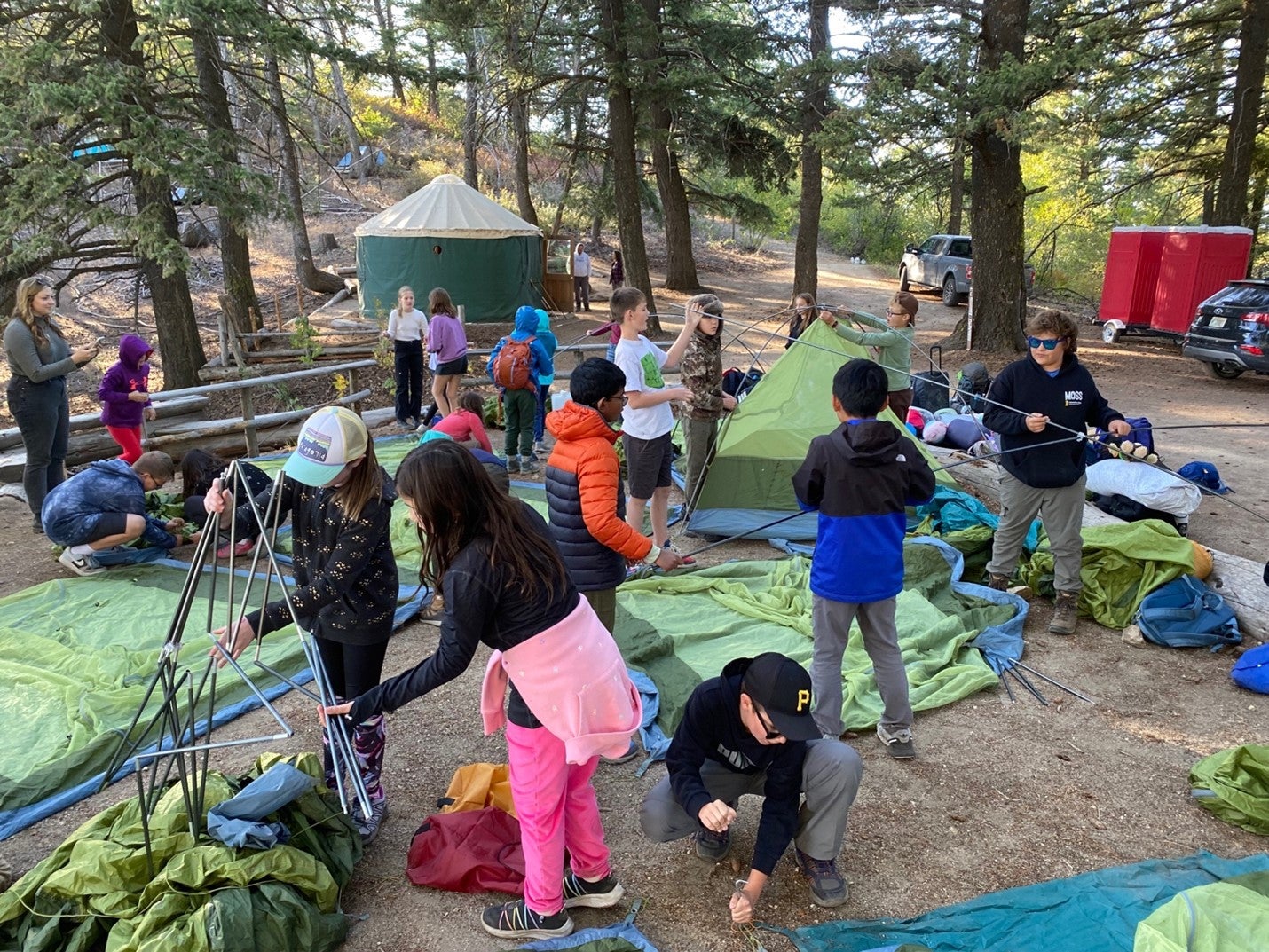
Learning Outcomes and Outdoor Skills
We focus on place-based outdoor education at Riverstone, and our campus sits in the shadows of Lucky Peak. I sometimes find myself peering at the summit knowing such a diverse ecosystem sits atop. “Ecosystems and Urbanization” is the first unit of inquiry for our 5th grades, and a visit to the IBO allows our teachers to complete the unit with a brilliant opportunity for hands-on learning. It’s incredible to be able to view Lucky Peak from the bottom and then have the opportunity to see the lights of Boise below while at the summit.
This shows just how close humanity is to natural habitats, allowing for great discussion about how we can minimize our impact on nature and the wildlife that calls it home.
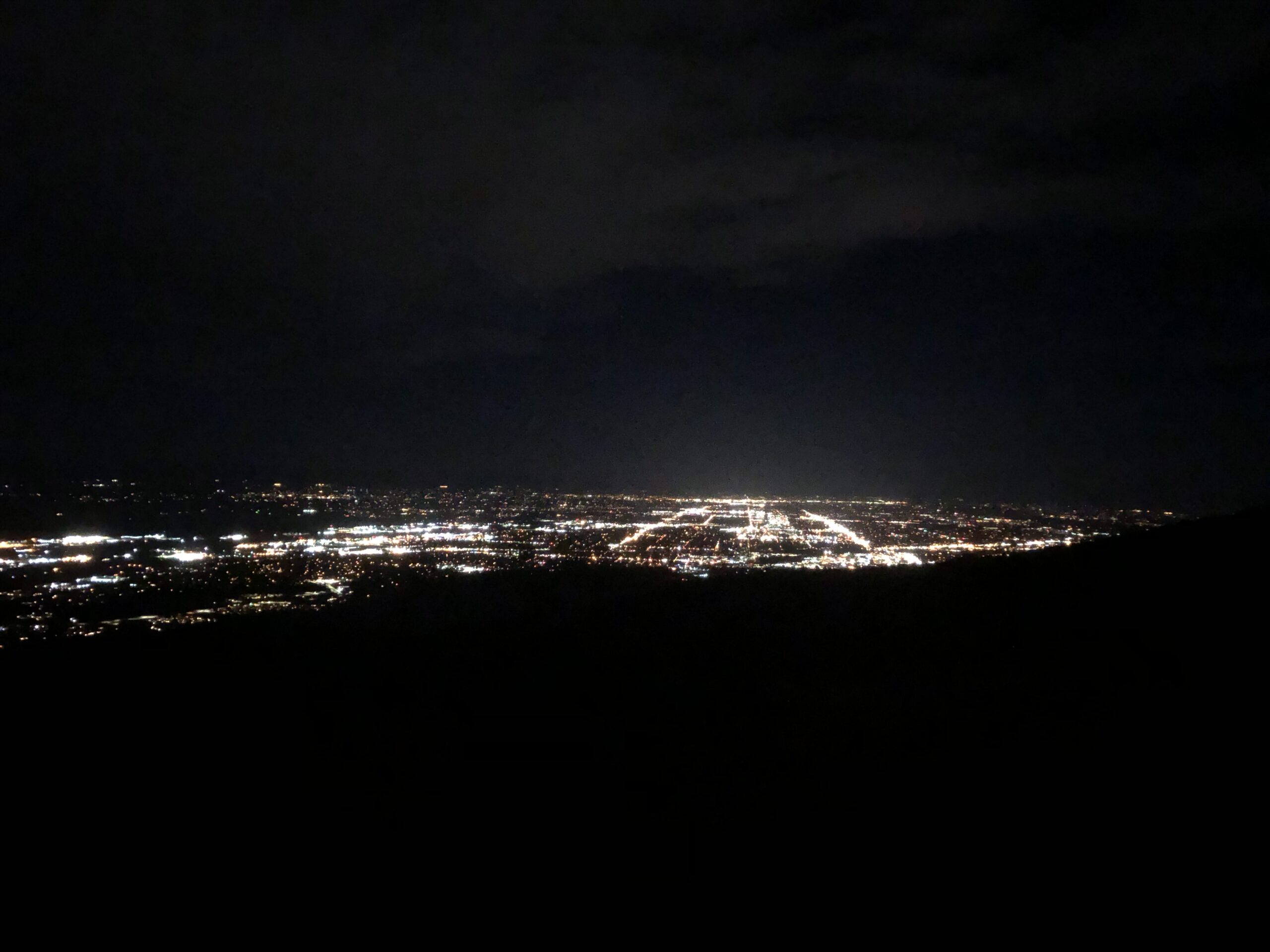
The tents are finally up and I find myself appreciating the friendly forecast of clear skies and no wind. Although, it would provide a great learning opportunity for our students to wake up a little bit wet in a collapsed tent.
I scramble to get dinner ready as students hover around the camp kitchen with growling stomachs loud enough to drown out the sounds of nature.
The kids are eagerly anticipating the opportunity to see an owl up close and personal. We quickly devour our dinner and clean our area up, discussing why it is important to throw all our trash away and dispose of all food particles appropriately. The air is getting cooler, jackets and hats are being put on, and the group heads up to the top of Hawkwatch to bid farewell to the setting sun as it sinks into hiding for the night.
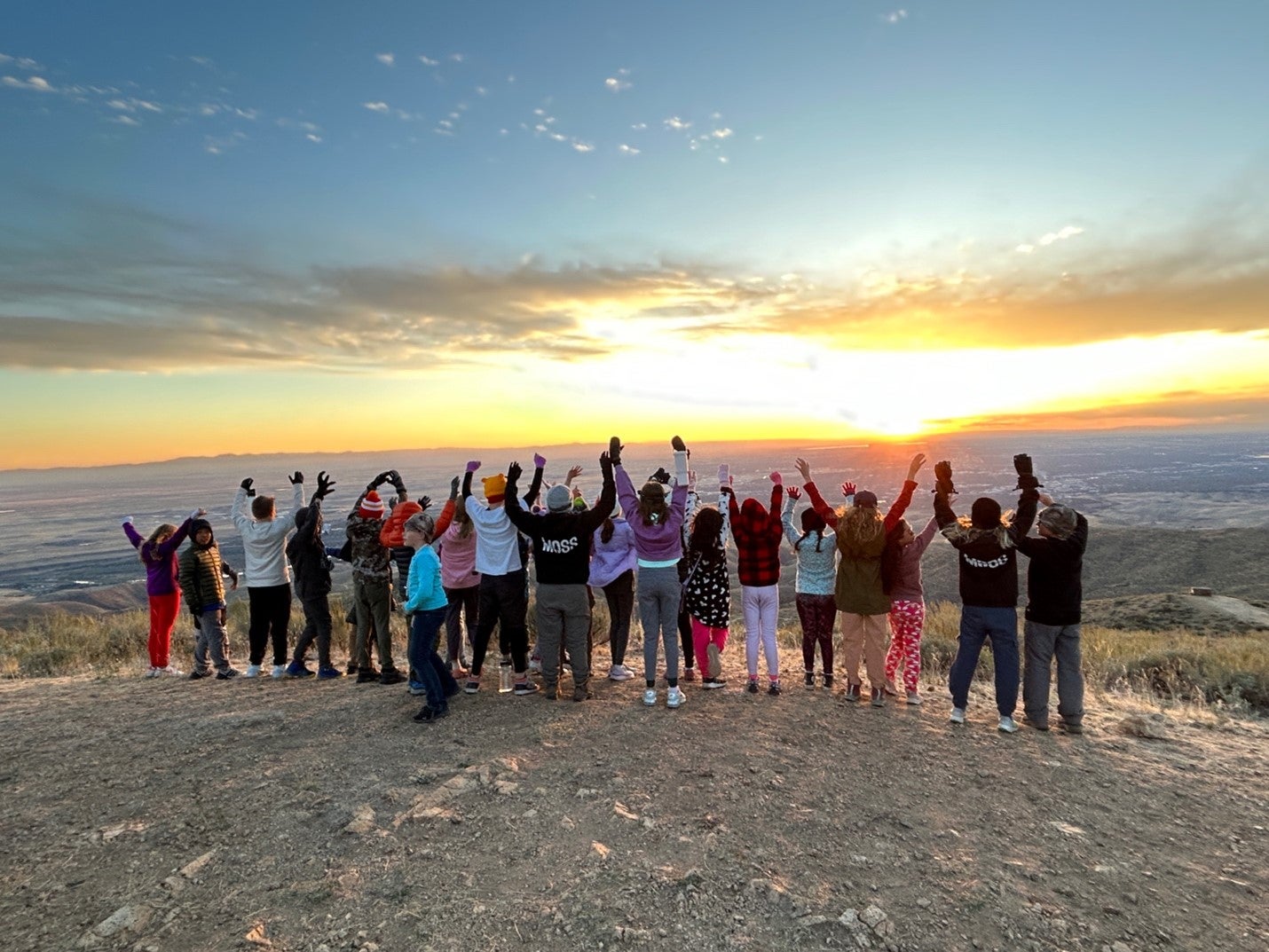
An Evening with the Owls
Darkness falls over the Peak and as the students come back down into camp, the owl lure broadcast calls begin and can be heard throughout the forest. With hushed excitement they file into a comfortably small amphitheater where Heather Hayes, IBO’s Community Science Coordinator, is preparing to present a wonderful program focusing on owls and their adaptations.
A perfect educational appetizer before the rest of the evening!
After the program, we quietly wait for the first owl net check. The research biologists that are camped at the top of the peak have awoken from their daytime slumber just as the owls they are attempting to catch. These nocturnal humans have such a passion for their work and are always excited and willing to share that passion with our students. We finally see two biologists ready to take students on a net “run”. After a quick orientation about walking carefully along the mist nets and trails of the research station, we are off.
Quietly and swiftly we make our way through the night walking along towering nets anticipating the arrival of a nocturnal predator.
Scanning the nets, a biologist spots something in the net. It’s a Northern Saw-whet owl! The kids quietly roar with excitement as we head back to the banding yurt to see it up close.
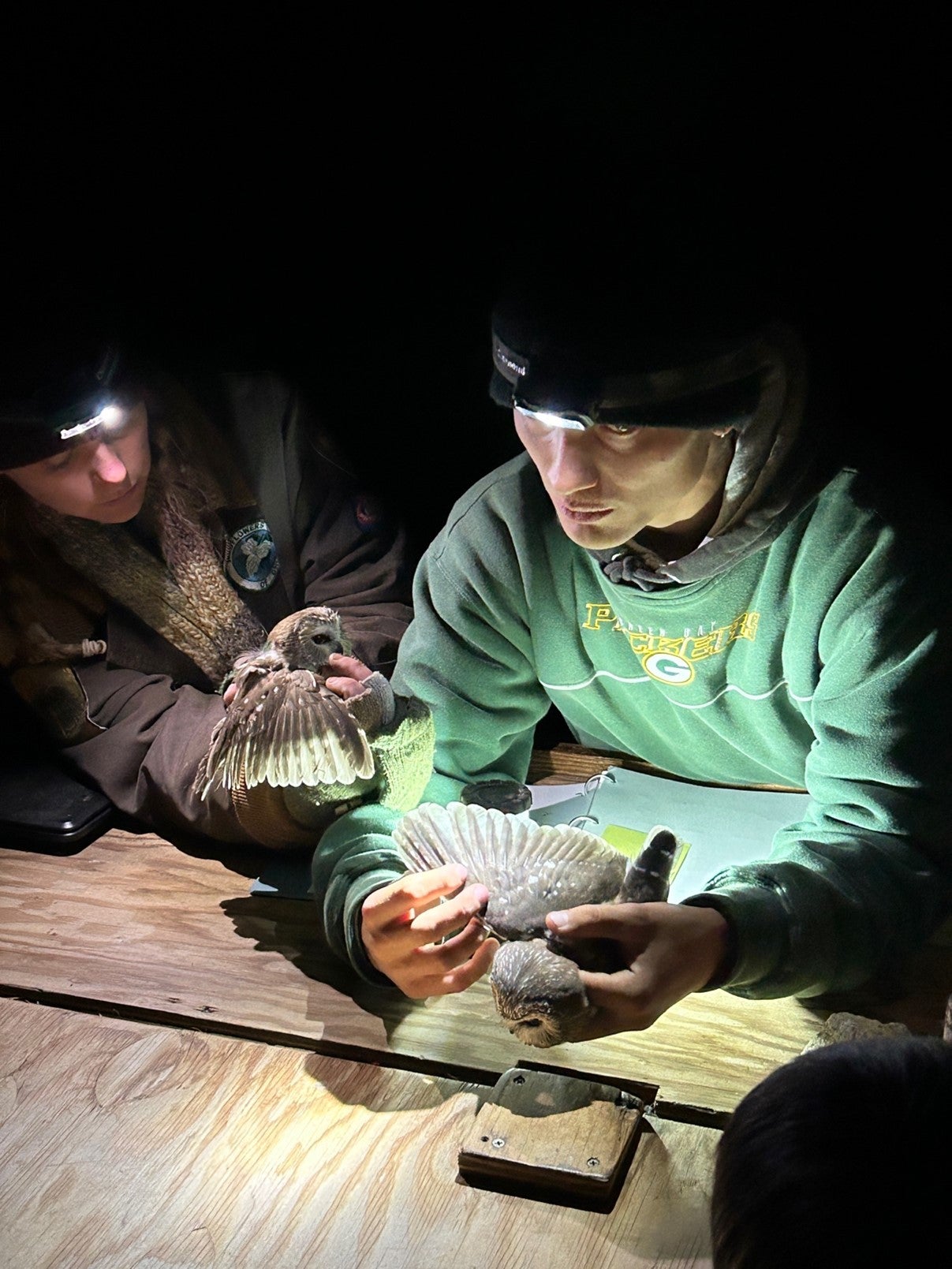
Back at the yurt, a small window opens to the outside where students can observe biologists doing actual research and work banding a variety of birds. As they measure weight, wing length, and collect other pertinent data, the biologists take the time to carefully explain what they are doing and the importance of why they are doing it.
I see absolute amazement and wonder in our students’ eyes as they are peering at such a tiny animal.
After the Northern Saw-whet Owl is done with its short visit in the trained hands of researchers, it is time to release it back into the night.
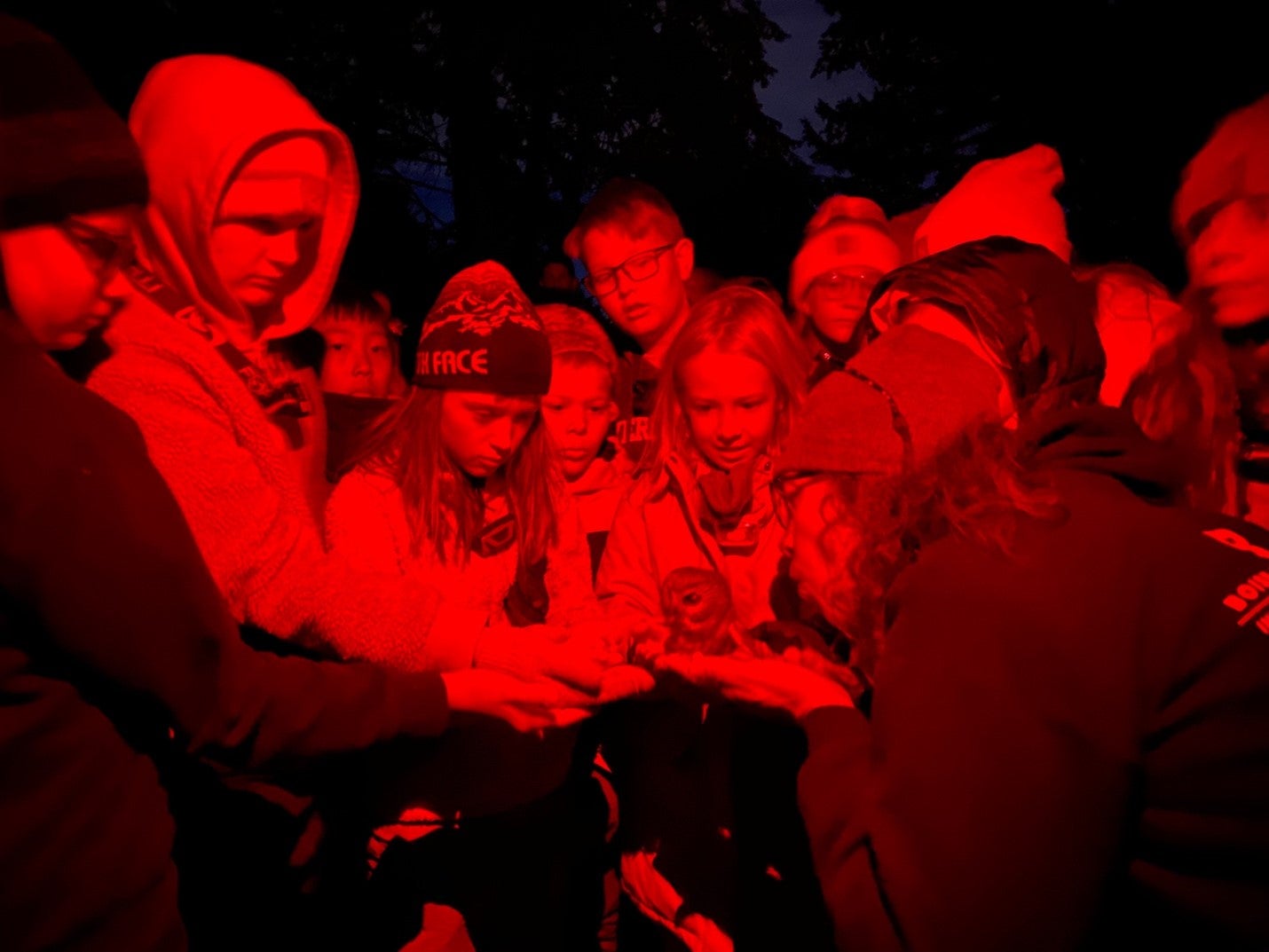
We go on a few more net runs, losing a few students to the call of a warm sleeping bag, and continue to find an owl or two each time. The teachers and I finally make the call to have all the students head to bed, much later than their bedtime at home.
As the students crawl into their tents and quiet their bodies and minds, the area around us is teeming with life in the night!
Sleep is important, for tomorrow morning we watch the research station make the switch to banding songbirds and need all the energy we can get!
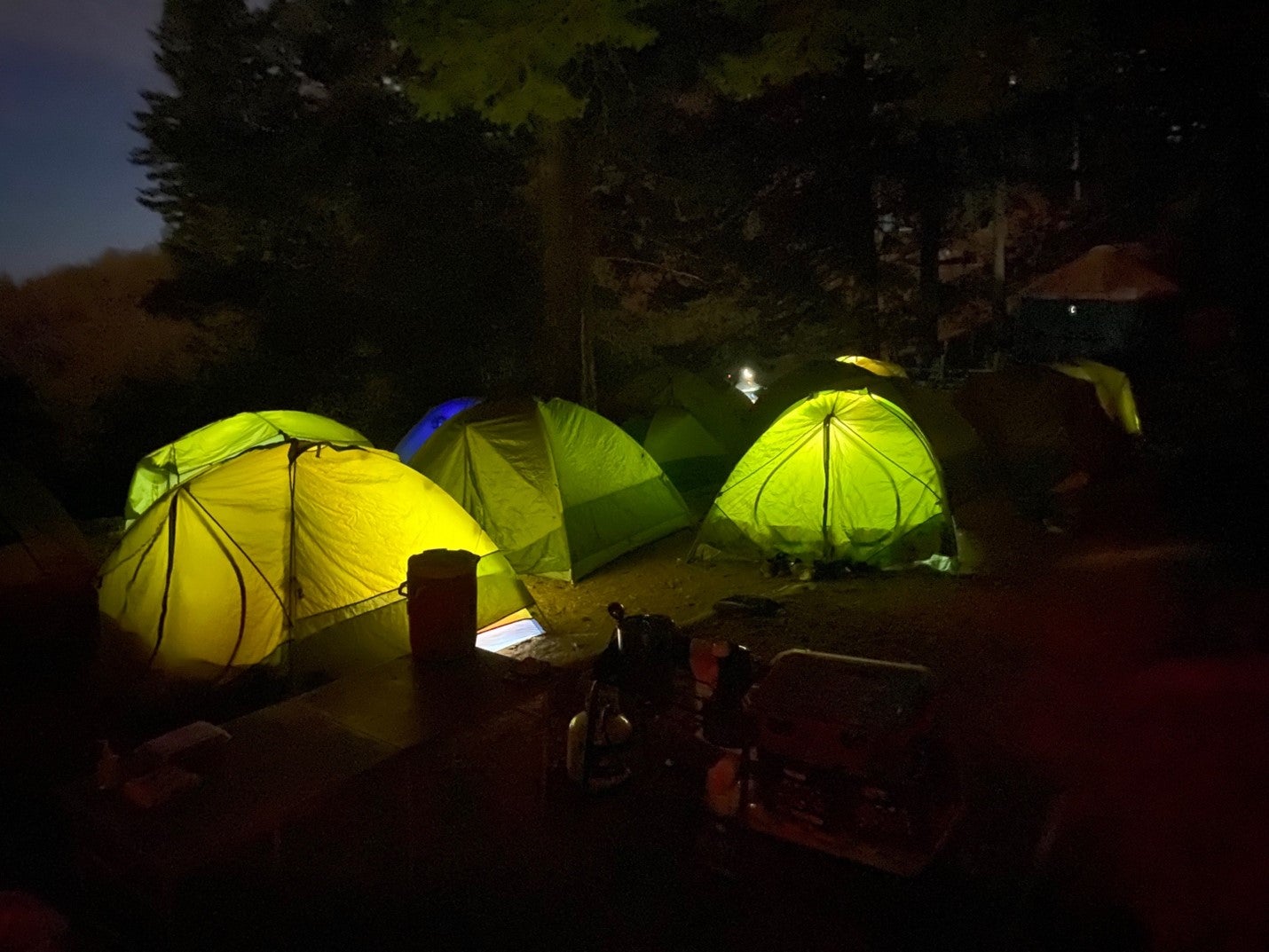
The cool air greets us in the early morning, and we break down camp while eating breakfast at the same time. The camping area is devoid of sagging tents and overlapping rainflies. The kids have packed up and are participating in songbird banding. Much like the owl net runs, we follow the mist nets to find songbirds who have softly fallen into the net. The researchers catch enough birds that each student can release one from the palm of their hand. A surreal experience for many, and one I have not had the opportunity to do in my 5 years of camping at the IBO as I prioritize the kids’ learning.
However, this year as the kids ventured away from camp to view birds of prey soaring over Boise, I heard my name…
“Derek, come have a little bit of fun!” Heather says as she approaches me with a Black-capped Chickadee. She gently sets the bird in my outstretched hand. It finds comfort in my warm palm. After a minute or so, it flies away, back to its life of migration and exploration. I feel giddy and joy as the kids do when they get to release a bird. I thank Heather for such a great experience. It was such a wonderful way to end a night at the IBO’s Lucky Peak migratory bird research station.
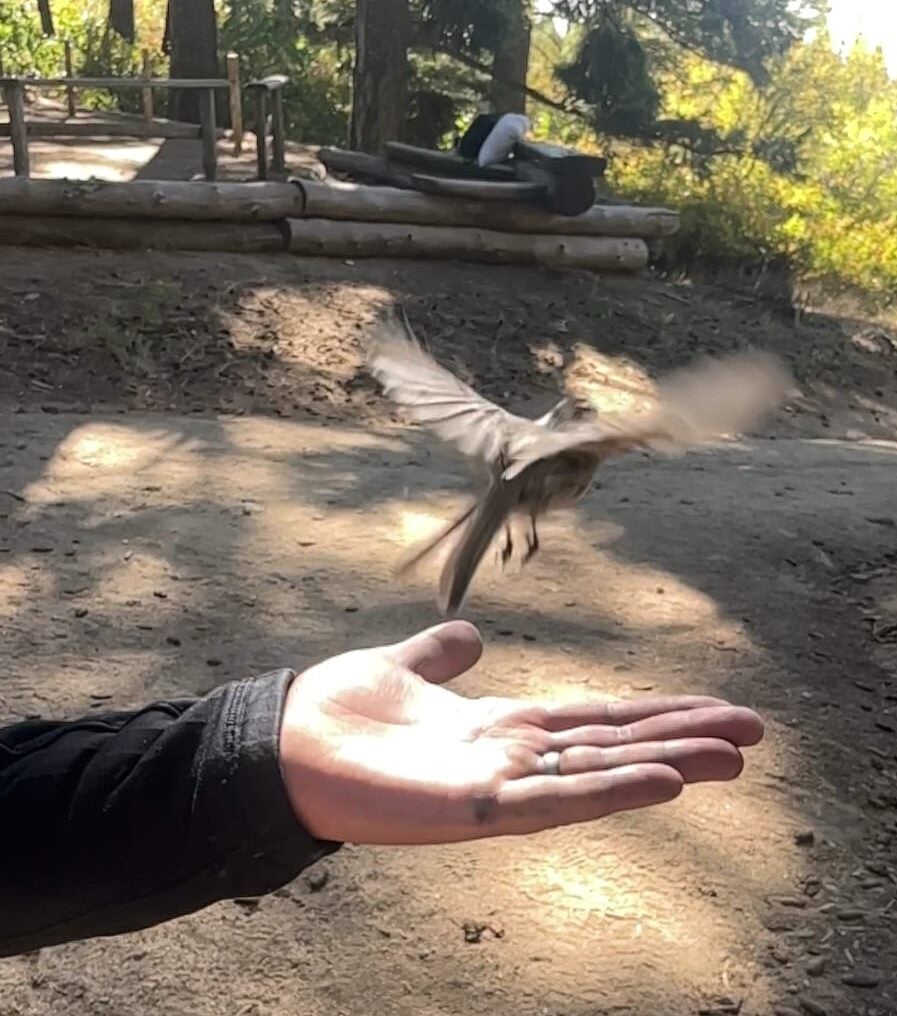
We Invite You to Invest in the Future of IBO’s Education and Outreach Today!
Did you know that the Lucky Peak project and our outreach work, including fantastic school field trips like the one you just read about, relies on your donations? If you’d like to boost the impact of your donation, consider contributing to the Barbara L. Forderhase IBO Education Fund. Select this endowed fund in the drop down option when you give on our secure website, or designate this fund on the memo line of your check. Building this endowment will ensure IBO’s outreach and education team will be able to continue providing quality conservation education programs for years to come.
Experience Idaho’s Fall Migration
Come visit Lucky Peak and take part in the magic of fall migration with the IBO! We love hosting visitors and providing unique hands-on learning opportunities for any age. Whether you stop in just for the day or decide to camp overnight, we have no doubt that this will be an unforgettable experience! Visit our registration webpage in July 2024 to reserve your spot.
This article is part of our 2023 end of the year newsletter! View the full newsletter here, or click “older posts” below to read the next article.
Make sure you don’t miss out on IBO news! Sign up to get our email updates.